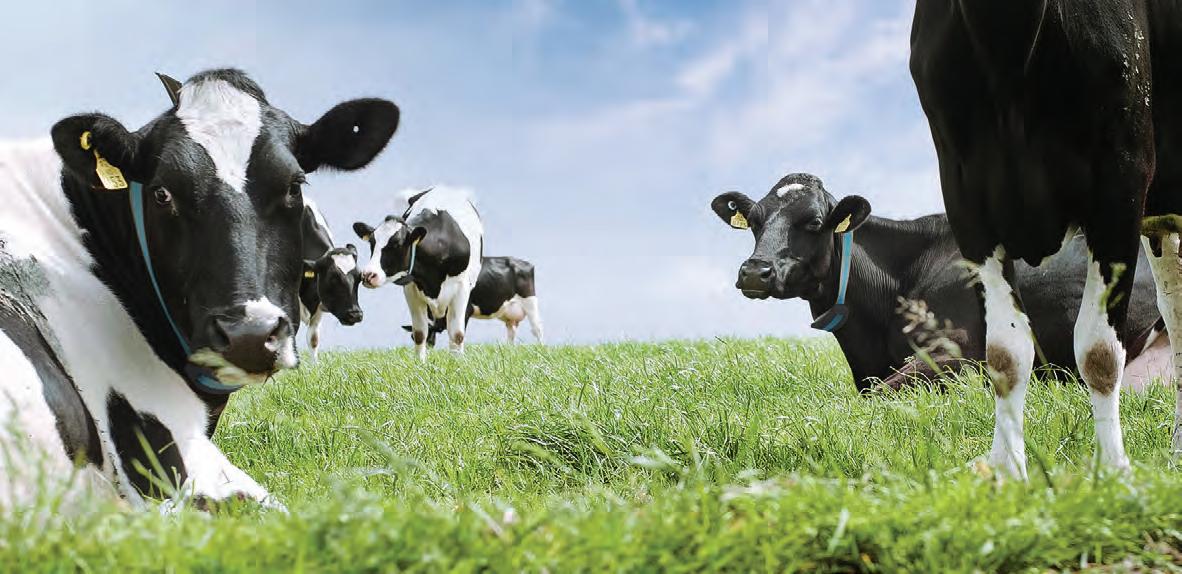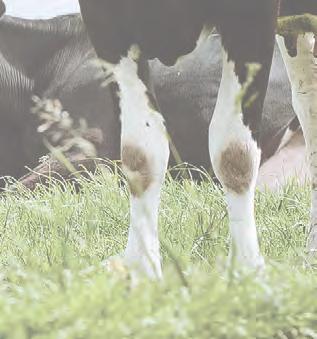
7 minute read
Weavian Farms United Kingdom
by Sun Media





Ian and Cath Ratcliffe adjusting to the new platform from the old 16-aside herringbone only took two milkings.
Clare Bayly
The SmartDRIVE milk pump control system controls the milk pump response to incoming milk volume and evens out the fl ow to maximise cooling.


Distance has been an enabler for Ian and Cath Ratcliffe in achieving their dream of building a sustainable future for their family.
First, they moved from one end of England to the other (Cheshire in the northwest of England, to Devon in the southwest) to settle at West Webbery Farm near the coastal town of Bideford. And then, seven years later, they imported a rotary dairy system 18,000 km from New Zealand.
“The distances weren’t an issue because we could see where we wanted to end up,” says Ian.
“We started farming in 2011 and put ourselves on a trajectory to own a dairy operation with potential to grow and futureproof our family.”
“The 2013 move to West Webbery Farm in North Devon enabled us to double the size of the herd and start breeding our own replacements.”
Today the couple milk an autumn calving herd of 360 cows on an intensive grazing system.
Two breeds
“The original herd was a mix of Holstein, Norwegian Red and British Friesian but over recent years we have dropped the British Friesians and are now primarily Holstein/ Norwegian Red.” Average production is 7,300L and 590kg MS/cow/year.
“The farm can be dry in summer, so we match peak production to on-farm conditions with the herd calving over 10 weeks from mid-August.”
Ian and Cath say they had a few solid goals in mind when they began their research towards building a new parlour for their Weavian Farms property.
“We farm in partnership at West Webbery Farm and wanted something that would replace our 24/48-unit herringbone, accommodate the herd and give us the fl exibilityy to expand in the future.
Rotary top choice
“The new parlour was always going to be a rotary, but choice of manufacturer was a result of extensive research and enquiry across a range of manufacturers around the world,” says Ian.
“The number one reason for moving from a herringbone to a rotary came down to the fundamentals which rotaries deliver – and which met our effi ciency goals – speed and ease of operation, labour saving, reduced stress on cows plus the ability to add automation in the future.”
After looking at a range of rotary systems, Ian and Cath settled on a 44-bail Centrus Composite Rotary platform from Waikato Milking Systems.
The Ratcliffes say the number one reason for selecting a Centrus was the unique attributes of its multi-layer laminated platform which can be tailored specifi cally to each farmer’s requirements.
Its single bail modular design means the Centrus can be built in almost any size.
The composition of the platform means it is 75 per cent lighter and more durable than traditional concrete or steel alternatives. With proper care, Centrus platforms will look like new for their entire life, never pitting or cracking with age or exposure to effl uent and harsh chemicals.





BailGate straps in place, holding the cows on the platform.


The interior of the parlour is light and uncluttered.
SmartLINK is the data gateway between farm and external herd management solutions and drafting.


The parlour’s receiving can.
Close-up of the Waikato Milking Systems’ 320 claw cluster set, which promotes milk fl ow while providing a stable milking environment.


The composite deck is clothed in rubber mats in every bail, which cushions the cows, protecting their hooves during milking. The mats also make for a quiet milking environment.
Plug ‘n’ play
Waikato Milking Systems’ “plug ‘n’ play” feature also appealed to Ian and Cath, because it gave them the reassurance that the system could always be updated with the latest technology.
Their desire to reduce labour and increase effi ciency saw them invest in SmartD-TECT pulsation, which eliminates the need for forestripping and has been proven to positively impact on production and udder health.
In contrast with traditional pre-milking practices, the milker simply attaches the cluster when the cow enters the platform leaving premilking stimulation to SmartD-TECT.
Having the SmartD-TECT option added to their rotary meant the Ratcliffes could operate their parlour with one person, if needed.
Cath said they decided to install a full range of other milking automation options available for the platform, to simplify milking and make it more pleasurable and faster without compromising the cows’ production and health.
These features include: • Electronic Milk Meters linked to feed to yield. The Electronic Milk Meters also give the milking profi le of each cow at every milking. • SmartECRs (electronic cup removers) can independently operate BailGates,
SmartSPRAY and SmartD-TECT. • BailGate Straps automatically lower and raise as required to hold or release cows from the platform. • Variable speed milk and vacuum pumps
ensuring maximum precision with minimal power usage. • SmartSPRAY automatic teat spray system which, pre and post milking, sprays every cow, every time. • A three-way drafting gate.
“The technology we included in the new parlour reduces our reliance on labour and allows one person to comfortably milk, improve feed use effi ciency, reduce energy consumption and optimise milk production and cow health,” says Cath.
Site utilisation
The site for the new parlour was adjacent to the old herringbone, enabling the couple to utilise the collection yard and giving them proximity to established services like electricity and water.
The Centrus Rotary Platform arrived in a shipping container from New Zealand, accompanied by a specialist team who oversaw the unloading, set-up and commissioning.
The new parlour was commissioned in the spring of April 2019, with the cows transitioning well to the new environment.
Two years on, Ian and Cath say the Centrus Composite Rotary is easy to use and maintain.
“The new parlour has delivered the goals we set out to achieve – speed and ease of operation, labour saving and reduced stress on the cows plus the ability to upgrade as new technology is developed,” says Cath.
“Having a parlour of this quality and ease of use is certainly an inducement to attracting and retaining high quality staff and, hopefully in time, our sons Josh and Freddie.
“The platform has the capacity to milk a lot more cows than we currently are, so it is not a pinch-point to expansion should opportunities for land become available.”























